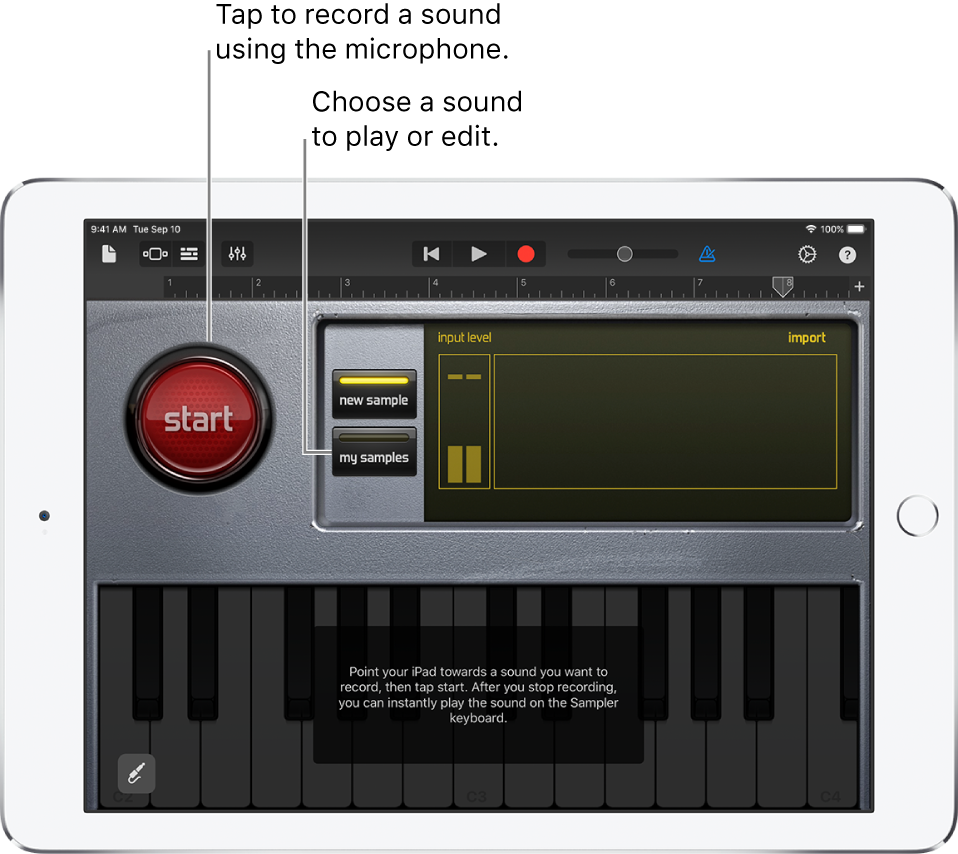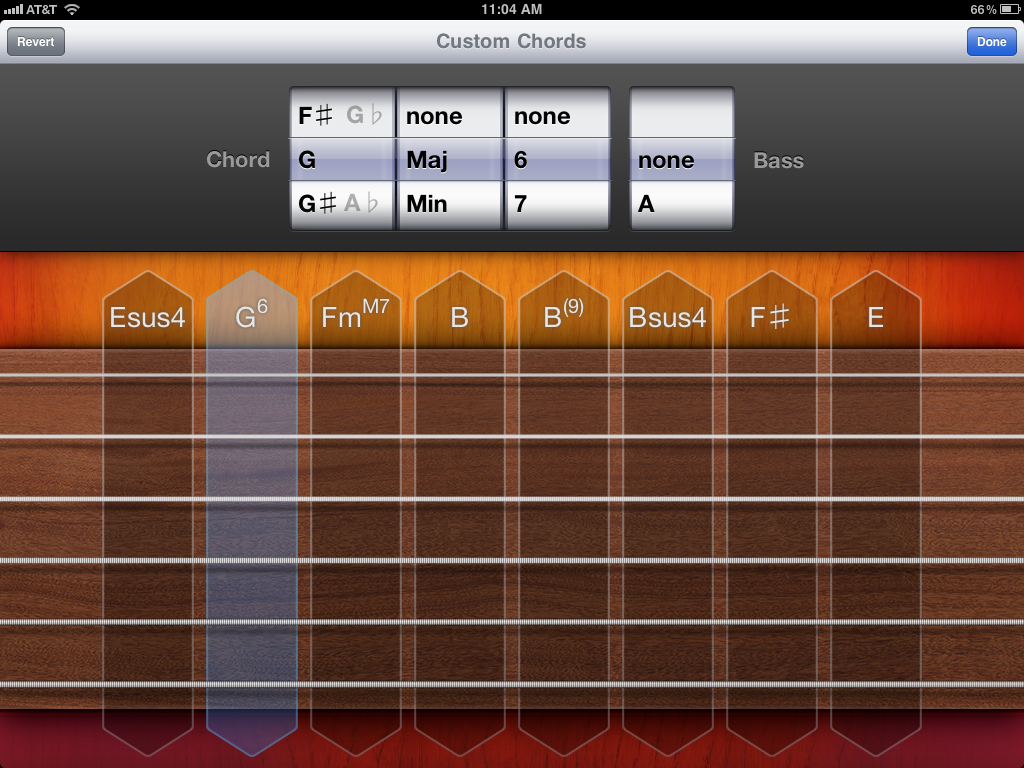How To Play Clocks On Garageband Ipad
Related articles:
Tap the GarageBand app to start it.

A list of instruments appears. Swipe left or right to scroll the instruments.
Tap on an instrument, such as Keyboard, to display it.
A series of buttons appear at the top of the window that allow you to record what you play on the virtual instrument, play it back, visit any songs you have saved, control volume, and return to the main instrument selection screen.
- GarageBand for iOS makes it incredibly simple to play, record and share your music, no matter where you are. Tap into a wide range of instruments from around the world. And now with the Sound Library, you can choose and download more free instrument and loop packs when new sounds are released, to help you easily craft songs in your favourite.
- How to 'play' GarageBand. Today's Best Tech Deals. You can also play and control GarageBand with your iPad. Above the keyboard you’ll see the current instrument’s smart controls.
Jun 12, 2016 Topic: How To Play Rock Guitar using Garageband on iPhone 5/5C/5S/6/6S/SE/ & iPad 2/3/4/Air/Air 2/Gold In this Video Regi Milton will tell you about how to.
Tap the instrument, whether it’s a drum or keyboard, to produce sounds. Tapping the Instruments button allows you to change to a different instrument.
Tap the Record button to record your playing.
After you tap the Record button, start playing and tap it again when you’re done. Play back what you’ve recorded by tapping My Songs, tapping an item, and then tapping the Play button.
Tap the Record button to record your playing.
After you tap the Record button, start playing and tap it again when you’re done. Play back what you’ve recorded by tapping My Songs, tapping an item, and then tapping the Play button.
Tap the Instrument Settings button.
Control settings such as echo and reverb appear.
Tap the Song Settings button.
The dialog that appears allows you to add sounds or adjust the tempo.
GarageBand User Guide for iPad
Every GarageBand song has settings for the metronome and count-in, as well as the song tempo (speed), key and time signature, which you can change at any time. You can also add an automatic fade-out.
Open the song settings
Change the metronome settings
GarageBand has a metronome to help you play and record in time. The metronome includes a count-in that plays before recording starts, to help you get ready. When the visual count-in is turned on, the metronome displays the beat of the count-in. In the song settings, you can turn the count-in on or off, and change the sound of the metronome.
Open the song settings, then tap Metronome and Count-in.
To turn the count-in on or off, tap the Count In switch. When the count-in is on, you can turn the visual count-in on or off by tapping the Visual Count-in switch.
To change the sound of the metronome, choose a new metronome sound from the list.
To change the volume of the metronome, drag the Metronome Level slider left or right.
Change the tempo of a song

Each song has a tempo (speed) that lasts for the entire song. You can change the tempo when either a Touch Instrument or Tracks view is open.
Open the song settings, then tap Tempo to show the tempo controls.
Do one of the following:
Set the tempo: Tap the tempo bar repeatedly.
Change the tempo incrementally: Tap the up or down arrow next to the tempo number. You can swipe vertically to change it in larger steps.
When you change the tempo of a song, recordings from Touch Instruments (except the Audio Recorder and Amp) change to match the new tempo. Apple Loops also change to match the new tempo.
Change the key of a song
Each song has a key that lasts for the entire song. You can change the key in any Touch Instrument or in Tracks view.
Open the song settings, tap Key, then tap a new key. You can also select a different scale (major or minor).
When you change the key of a song, recordings from Touch Instruments (except the Audio Recorder and Amp) change to match the new key. Apple Loops also change to match the new key.
Turn off Follow Song Key for recordings and loops
By default, when you change the key of a song, the recordings and loops in the song change to match the new key (except Audio Recorder and Amp recordings). You can turn off this setting if you want to try out different keys without changing the recordings and loops in the song.
Open the song settings, then turn Follow Song Key off.
How To Play Clocks On Garageband Ipad Pro
Tap Follow Song Key again to turn it on.
Change the time signature of a song
Each song has a time signature that lasts for the entire song. You can change the time signature in any Touch Instrument or in Tracks view.
Open the song settings, tap Time Signature, then tap a new time signature.
When you change the time signature of a song, existing recordings and loops in the song do not change.
Add a fade-out
You can add an automatic fade-out to the end of a song. When you turn on Fade Out, the last ten seconds of the song fade to silence. If you extend the last section by adding or moving regions, the fade-out adjusts to the new end of the song. You hear the fade-out when you play or share the song, but not while recording.
Open the song settings.
Turn Fade Out on.
Tap Fade Out again to turn off the automatic fade-out.
Use 24-bit audio
When 24-bit audio is turned on, GarageBand records, mixes and exports audio in 24-bit resolution. 24-bit audio uses more storage space, but provides higher resolution for audio editing.
Garageband On Ipad Pro
Open the song settings, then tap Advanced.
Turn 24-bit Audio Resolution on.
Send tempo information to music apps and MIDI devices
You can use MIDI clock to sync other music apps or MIDI devices to the tempo used in GarageBand when playing or recording.
How To Play Clocks On Garageband Ipad 2
Open the song settings, then tap Advanced.
Turn Send MIDI Clock on.
How To Play Clocks On Garageband Ipad 4
When you use Live Loops, MIDI clock is only sent when recording or playing back a Live Loops performance.